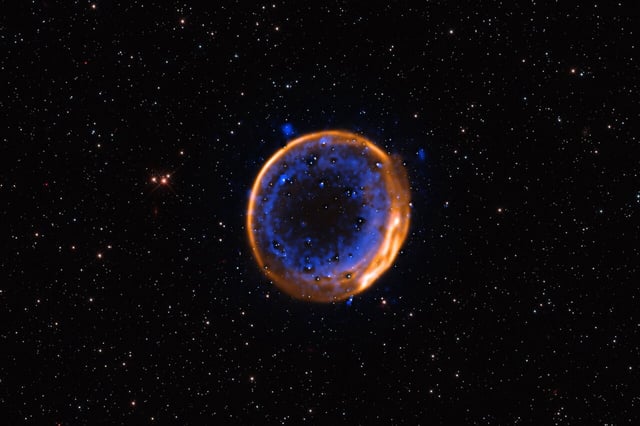Overview
- Observations with ESO’s Very Large Telescope and the MUSE instrument mapped calcium in SNR 0509-67.5, revealing two distinct concentric shells as visual proof of a double detonation.
- Published July 2 in Nature Astronomy, the study led by Priyam Das and Ivo Seitenzahl shows an initial helium-shell ignition triggered a secondary core explosion before the white dwarf reached 1.4 solar masses.
- This empirical confirmation of the sub-Chandrasekhar double-detonation model challenges the sole reliance on the Chandrasekhar mass scenario for Type Ia supernovae.
- Revised explosion physics will inform nucleosynthesis pathways for iron and heavy elements and refine calibrations of Type Ia supernovae as standard candles in cosmology.
- An international team plans follow-up spectroscopic surveys of other young Type Ia remnants to determine how common sub-Chandrasekhar double detonations are in nature.
